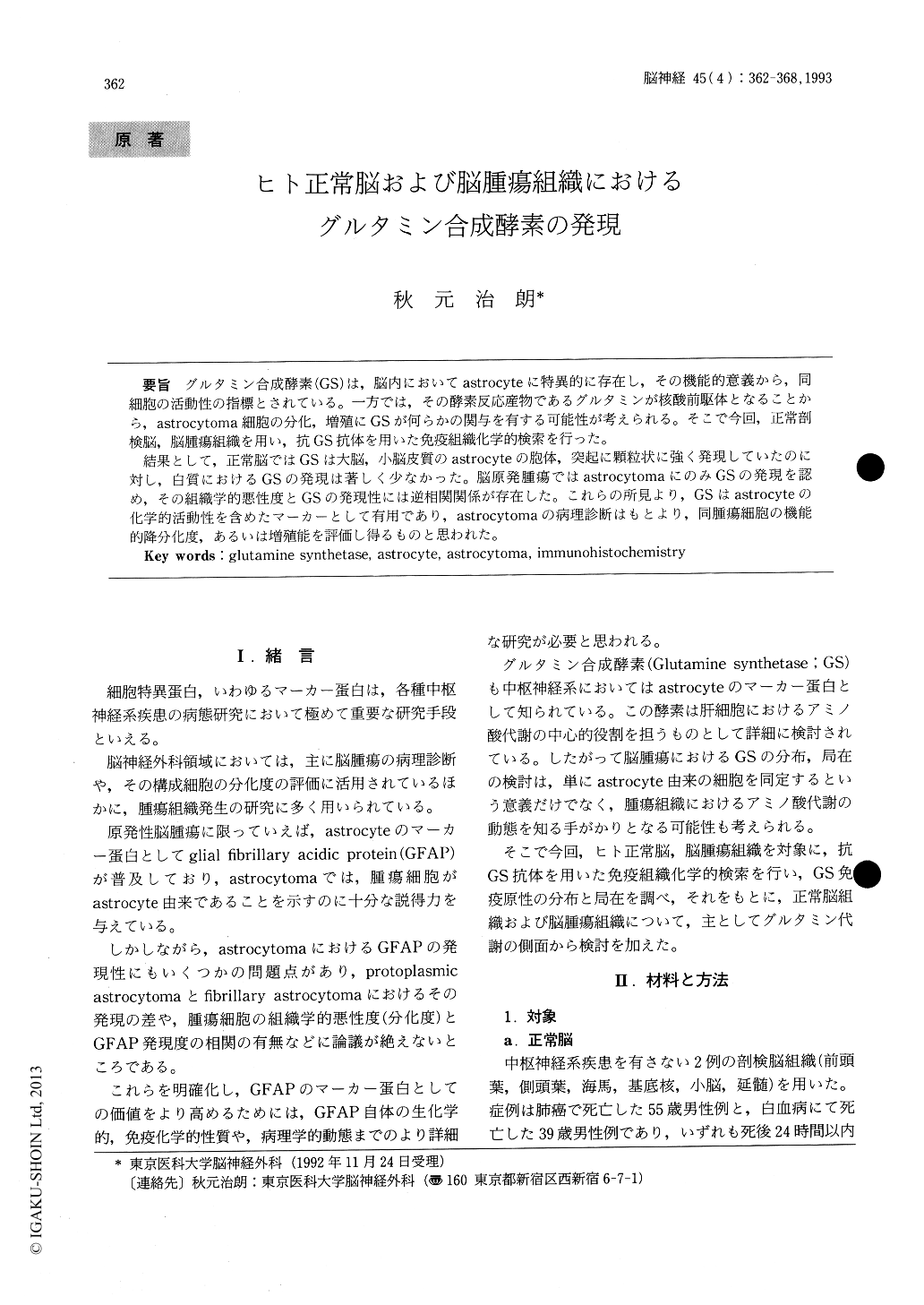Japanese
English
- 有料閲覧
- Abstract 文献概要
- 1ページ目 Look Inside
グルタミン合成酵素(GS)は,脳内においてastrocyteに特異的に存在し,その機能的意義から,同細胞の活動性の指標とされている。一方では,その酵素反応産物であるグルタミンが核酸前駆体となることから,astrocytoma細胞の分化,増殖にGSが何らかの関与を有する可能性が考えられる。そこで今回,正常剖検脳,脳腫瘍組織を用い,抗GS抗体を用いた免疫組織化学的検索を行った。
結果として,正常脳ではGSは大脳,小脳皮質のastrocyteの胞体,突起に穎粒状に強く発現していたのに対し,白質におけるGSの発現は著しく少なかった。脳原発腫瘍ではastrocytomaにのみGSの発現を認め,その組織学的悪性度とGSの発現性には逆相関関係が存在した。これらの所見より,GSはastrocyteの化学的活動性を含めたマーカーとして有用であり,astrocytomaの病理診断はもとより,同腫瘍細胞の機能的降分化度,あるいは増殖能を評価し得るものと思われた。
Specific expression in brain astrocytes, glutamine synthetase (GS) is considered to be an indicator ofcell activity, owing to its functional significance. Glutamine, its enzymic reaction product, has been found to be a precursor of nucleic acid and purine, suggesting some sort of involvement in astrocyte differentiation and proliferation. So, we conducted immunohistochemical analysis of GS in normal autopsied brain and brain tumor tissue, using anti-GS antibody.
In the normal brain, GS-immunoreactivity was marked in granular form in the cerebral cortex from the second layer to sixth layers, the cerebeller granular layer, and the astrocyte bodies and pro-jectionss in the Purkinje layer, but its manifestation in the cerebral white matter was extremely poor. GS was not present at all in ventricular ependymal cells and choroid plexus epithelial cells.
In the primary brain tumor, GS-immunoreactivity was seen only in the astrocytoma cells. An inverse correlation between histological malignancy and degree of GS expression was observed. Othewise, GS was expressed only in the metastatic brain tumor cells and the craniopharyngioma epithelial cells.
GS expression pattern in the normal brain reflected innate function through its pronounced presence in the astrocytes, where glutamic acid-transmitting synapse were abundant. This finding together with the histological malignancy-related expression of GS in the astrocytomas suggest that it could be not only a useful marker for pathologic tumor diagnosis but also usuful,for evaluating the functional cataplasia of tumor-composing cells or their potential of proliferation.

Copyright © 1993, Igaku-Shoin Ltd. All rights reserved.


